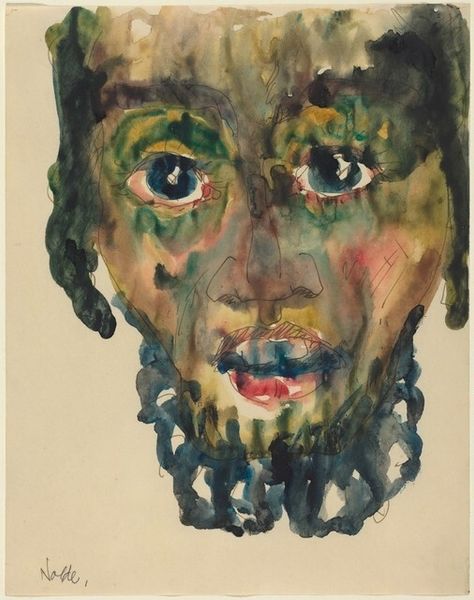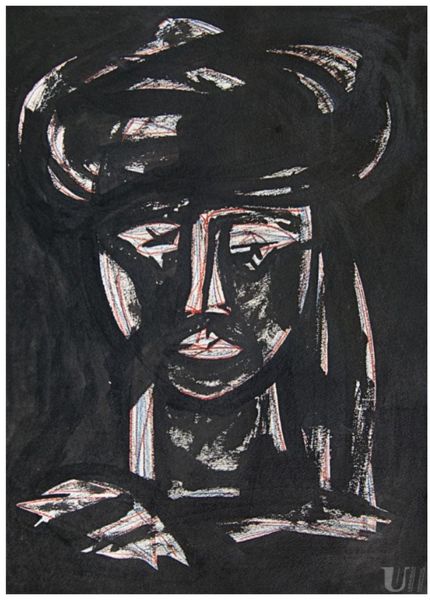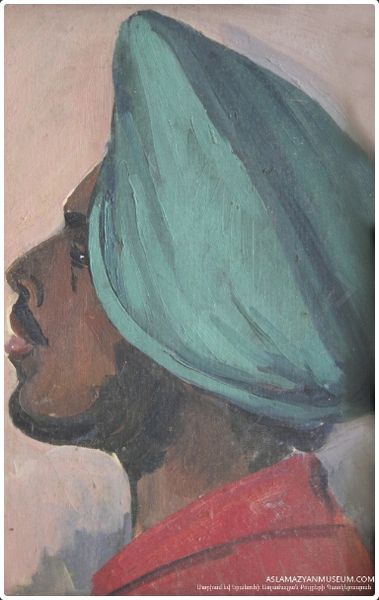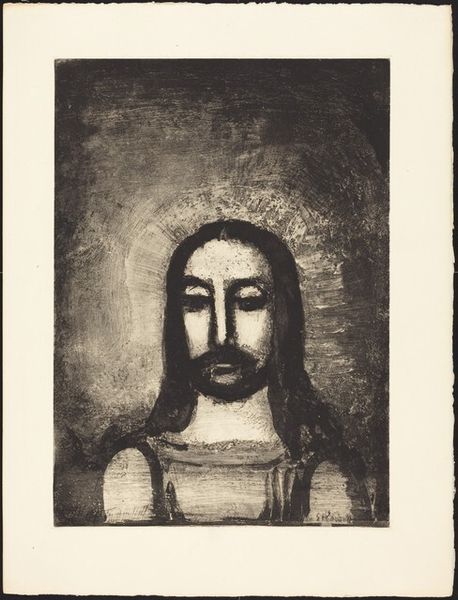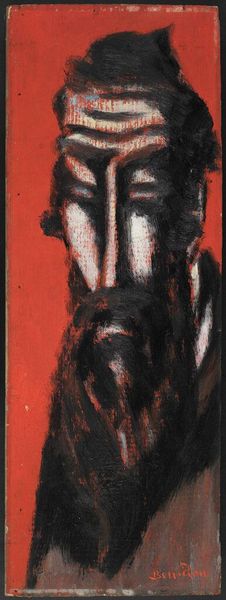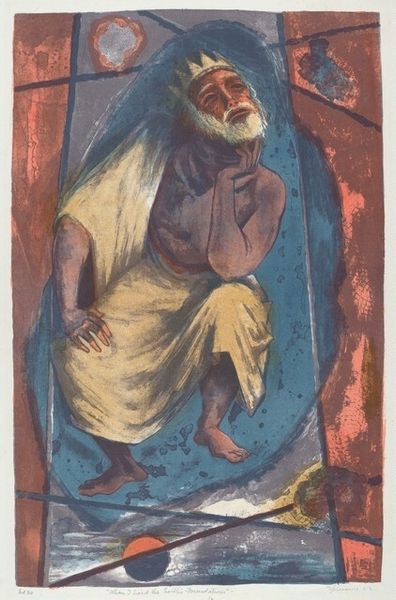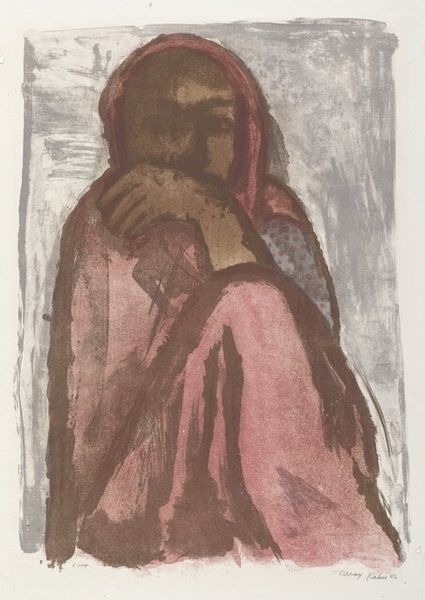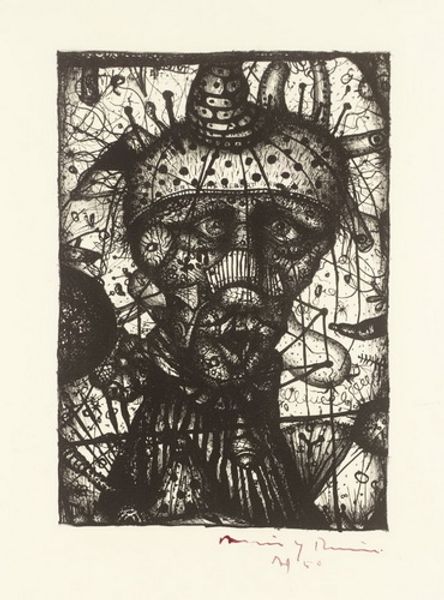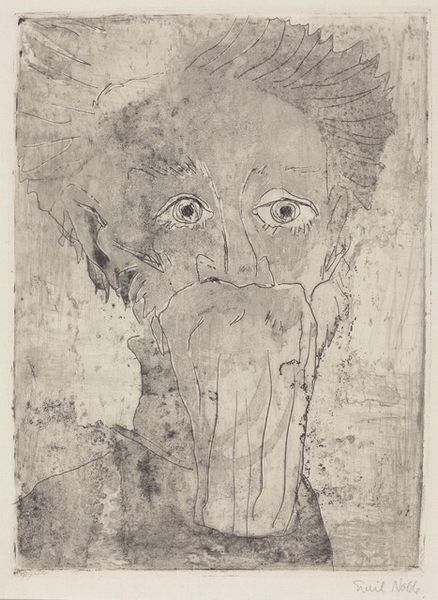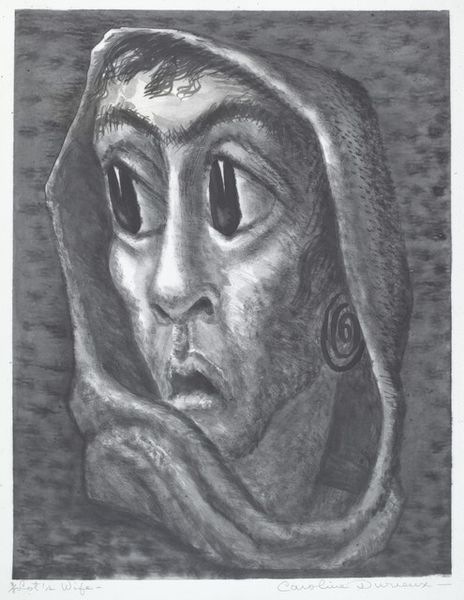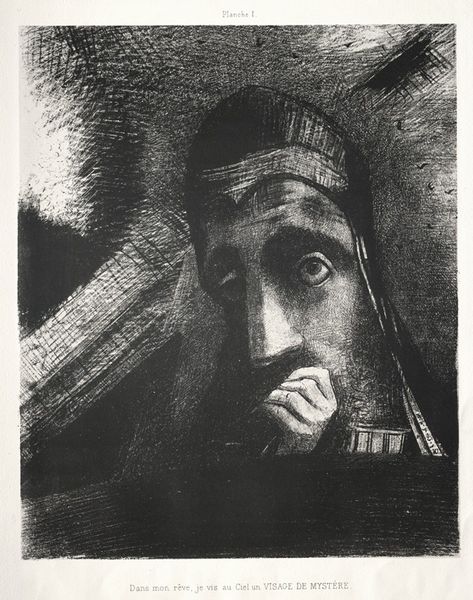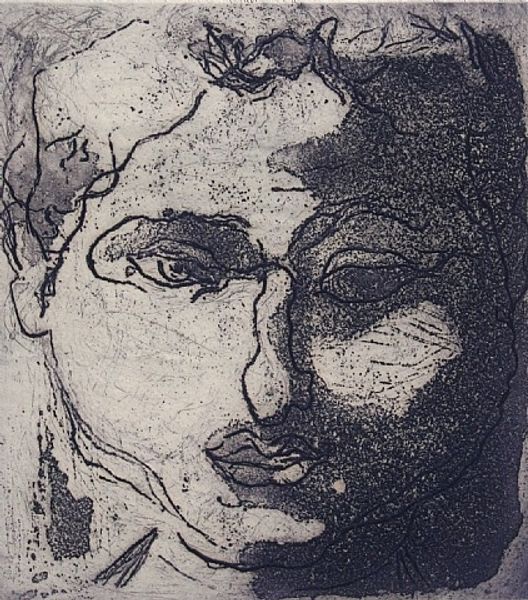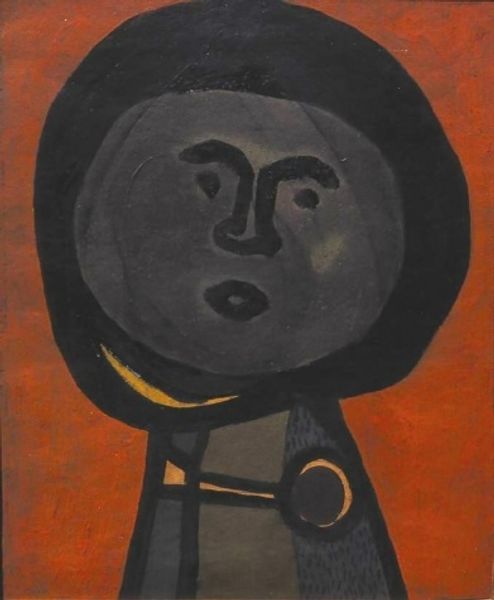
#
portrait
#
contemporary
# print
#
figuration
#
portrait art
Copyright: National Gallery of Art: CC0 1.0
Curator: What catches my eye immediately is this intense yet melancholic portrait. It's "Jive Dude," a 1972 print by Jerome Kaplan. The artist presents us with a contemporary take on figuration. Editor: Contemporary is right! It screams '70s, doesn't it? All that textured red, and this enormous, fabulous afro! It's less "jive" and more a study in pensive solitude, don't you think? I'm immediately drawn to his expression. There’s an undercurrent of sadness that pierces right through. Curator: Precisely! And it does highlight how fashion trends often signify and even shape cultural identities. This was the height of Black Power, and the afro was more than just a hairstyle; it was a political statement, a symbol of pride. This print acknowledges all of that. Editor: That is really brought out through the bold color choices Kaplan made here, a blood-red circle and rough marks of black ink define the man’s presence. The colors make the image look vibrant even though its subject appears heavy with thought. The redness is like the blood of protest, do you think? Curator: In a sense, yes. Remember that artists in this era consciously challenged traditional norms. The printmaking medium itself made the art accessible. Think about who had access to the high art world before the 70s and how much representation, particularly Black representation, mattered! Kaplan used that print to give a platform. Editor: Yes, he seems aware of it because there is no judgement in this portrait, the way he has cast this person almost in silhouette is fascinating and generous. Do you know any historical context of it showing publicly, such as at galleries or any awards? Curator: Archival research reveals “Jive Dude” premiered in smaller, community-based exhibitions that aligned with movements to show diverse voices in the seventies. The aim was clear: to ensure these narratives circulated beyond the established art market and were consumed as important narratives during this period. Editor: That’s amazing. Looking at this now, it makes me wish there was more visibility about what was circulating locally in the 1970s so as to understand contemporary taste back then. It makes you feel history as being a real narrative. Curator: That it is! We need the Kaplan’s and his art out there! Editor: Agreed. What an insightful rediscovery; these glimpses into yesterday fuel our dialogues today. Curator: A true confluence of technique, socio-political awareness, and that haunting evocation of emotionality leaves an echo long after one moves on.
Comments
No comments
Be the first to comment and join the conversation on the ultimate creative platform.
